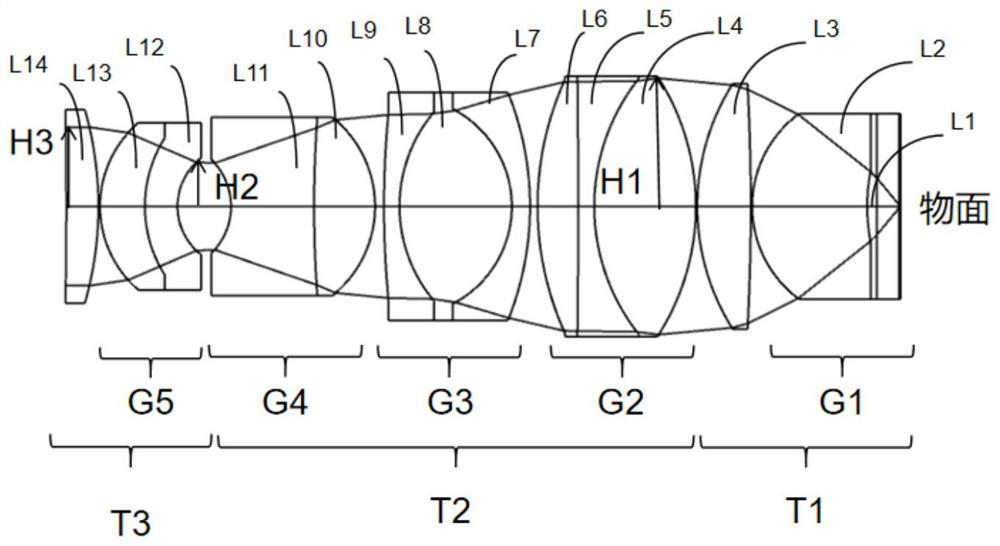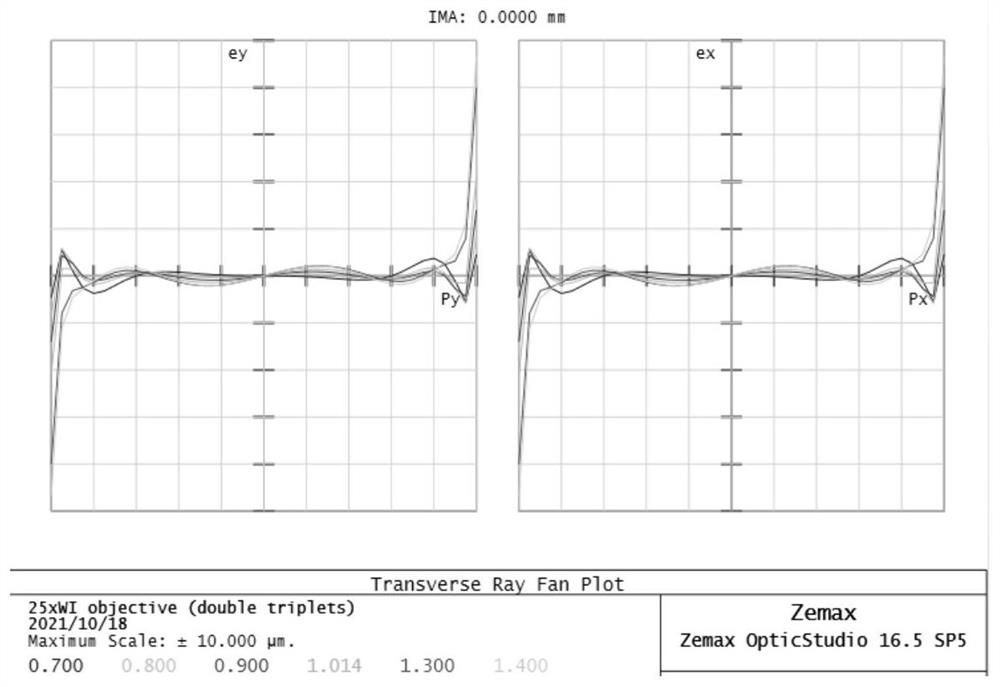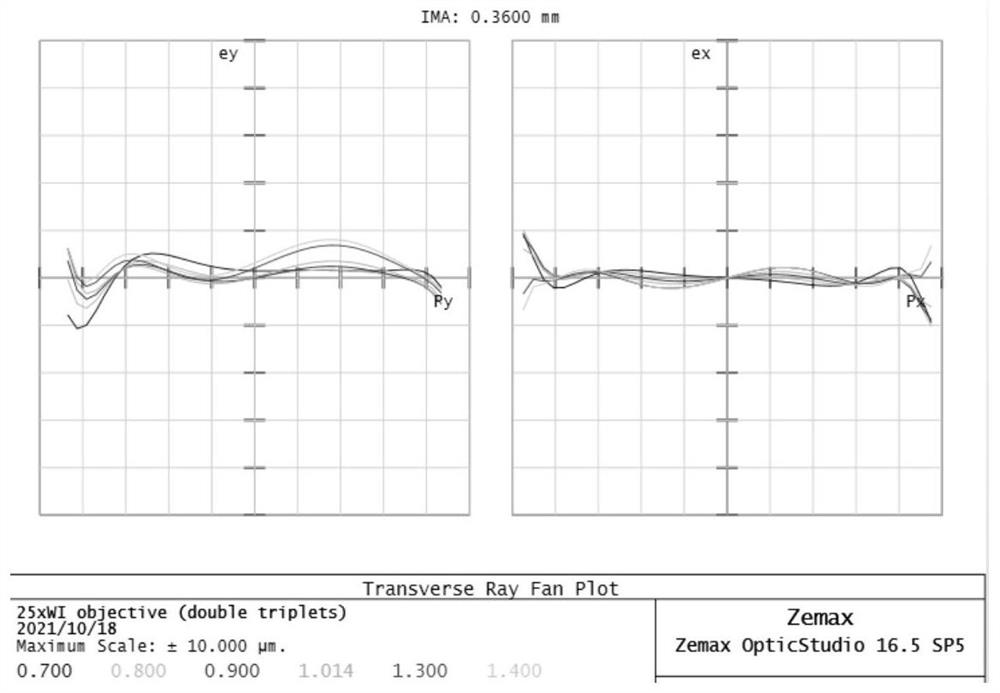Microscope objective lens
A technology of microscope objective lens and lens group, applied in the field of microscope, can solve the problems of high scattering, high noise, insufficient energy, etc.
- Summary
- Abstract
- Description
- Claims
- Application Information
AI Technical Summary
Problems solved by technology
Method used
Image
Examples
Embodiment 1
[0058] refer to figure 1 , along the direction of the optical axis from the object side to the image side, the microscope objective lens of this embodiment sequentially includes a first lens group T1, a second lens group T2 and a third lens group T3. It is mainly composed of 7 lens groups, including 14 lenses in total. In this embodiment, the first lens group T1 sequentially includes a first lens group G1 and a second lens group. Wherein, the first lens group G1 is a plano-convex lens with positive refractive power, which is a cemented lens group formed by cementing the first lens L1 and the second lens L2. Wherein, the first lens L1 close to the object side is a plano-convex lens, and the second lens L2 far away from the object side is a thick meniscus lens. The second lens group is the third lens L3 of the double-convex lens. The first lens group T1 provides positive optical power.
[0059] The second lens group T2 sequentially includes a third lens group G2 , a fourth l...
Embodiment 2
[0076] refer to Image 6 , along the direction of the optical axis from the object side to the image side, the microscope objective lens of this embodiment sequentially includes a first lens group T1, a second lens group T2 and a third lens group T3. It is mainly composed of 8 lens groups, including 14 lenses in total. In this embodiment, the first lens group T1 sequentially includes a first lens group G1 , a second lens group and a third lens group. Wherein, the first lens group G1 is a plano-convex lens with positive refractive power, which is a cemented lens group formed by cementing the first lens L1 and the second lens L2. Wherein, the first lens L1 close to the object side is a plano-convex lens, and the second lens L2 far away from the object side is a thick meniscus hyper-hemispherical lens. The second lens group is a meniscus third lens L3 with positive refractive power, and its concave surface faces the object plane. The third lens group is a meniscus fourth lens ...
Embodiment 3
[0096] refer to Figure 11 , along the direction of the optical axis from the object side to the image side, the microscope objective lens of this embodiment sequentially includes a first lens group T1, a second lens group T2 and a third lens group T3. It is mainly composed of 8 lens groups, including 14 lenses in total. In this embodiment, the first lens group T1 sequentially includes a first lens group G1 , a second lens group and a third lens group. Wherein, the first lens group G1 is a plano-convex lens with positive refractive power, which is a cemented lens group formed by cementing the first lens L1 and the second lens L2. Wherein, the first lens L1 close to the object side is a plano-convex lens, and the second lens L2 far away from the object side is a thick meniscus lens. The second lens group is a meniscus third lens L3 with positive refractive power, and its concave surface faces the object plane. The third lens group is the fourth lens L4 with positive refracti...
PUM
 Login to View More
Login to View More Abstract
Description
Claims
Application Information
 Login to View More
Login to View More - R&D
- Intellectual Property
- Life Sciences
- Materials
- Tech Scout
- Unparalleled Data Quality
- Higher Quality Content
- 60% Fewer Hallucinations
Browse by: Latest US Patents, China's latest patents, Technical Efficacy Thesaurus, Application Domain, Technology Topic, Popular Technical Reports.
© 2025 PatSnap. All rights reserved.Legal|Privacy policy|Modern Slavery Act Transparency Statement|Sitemap|About US| Contact US: help@patsnap.com



